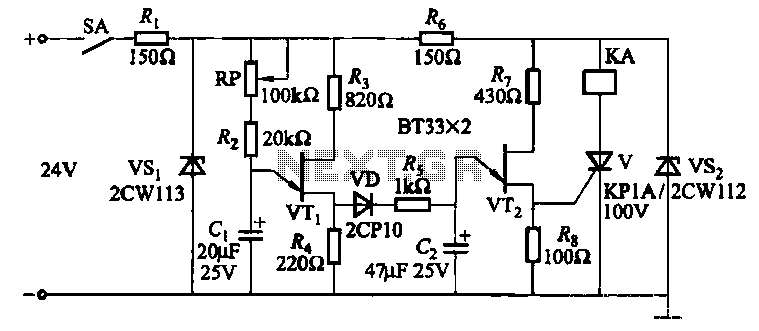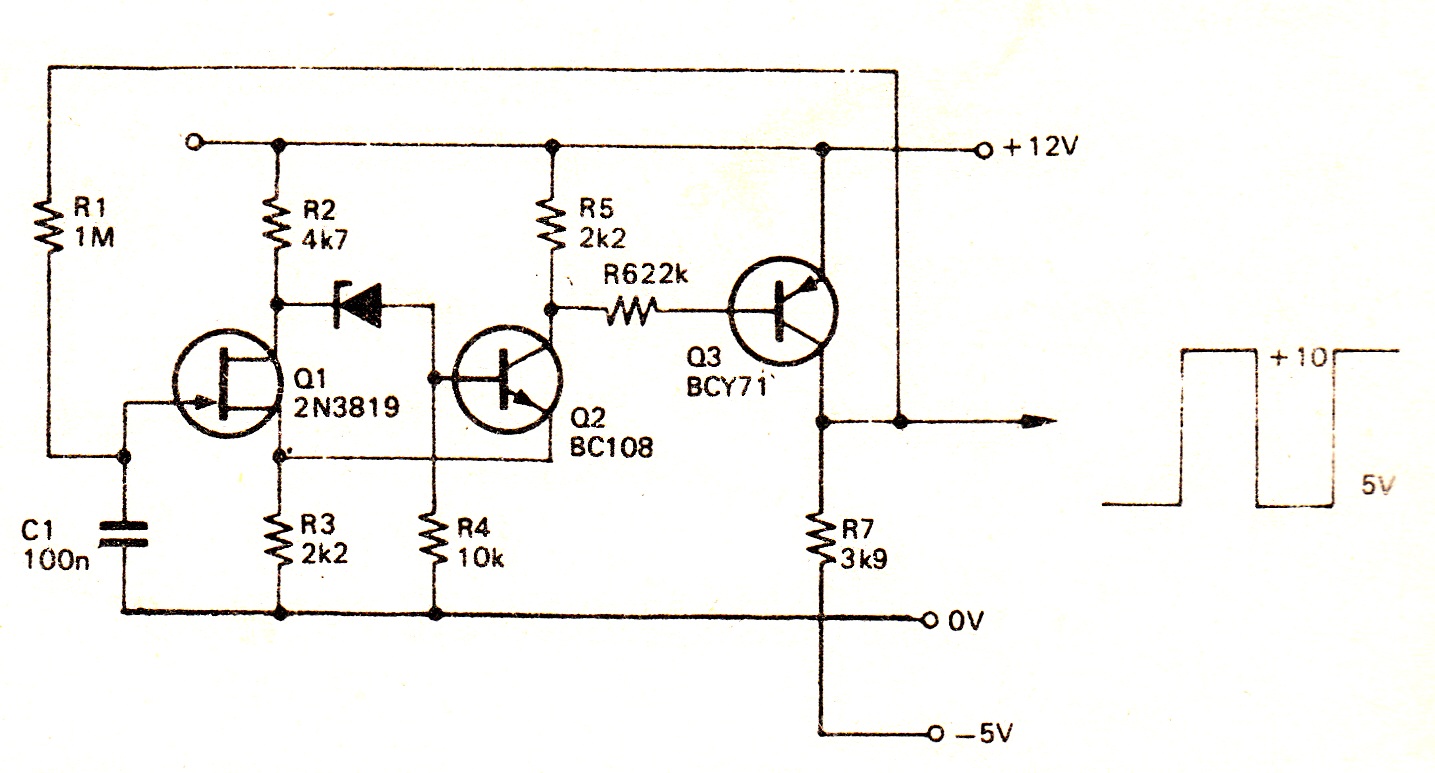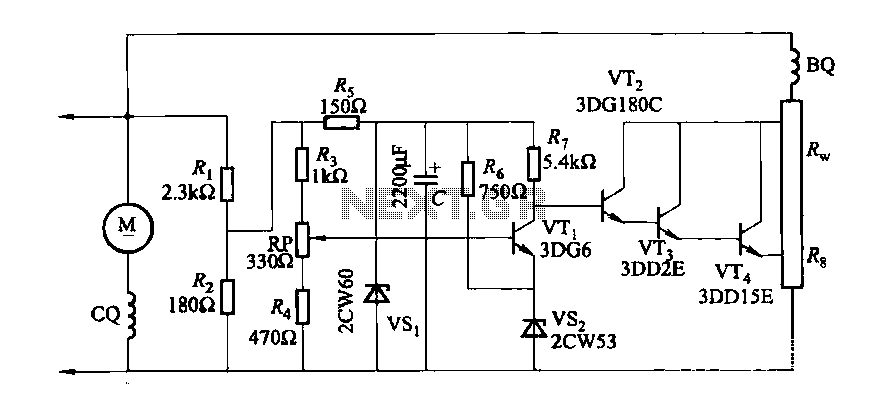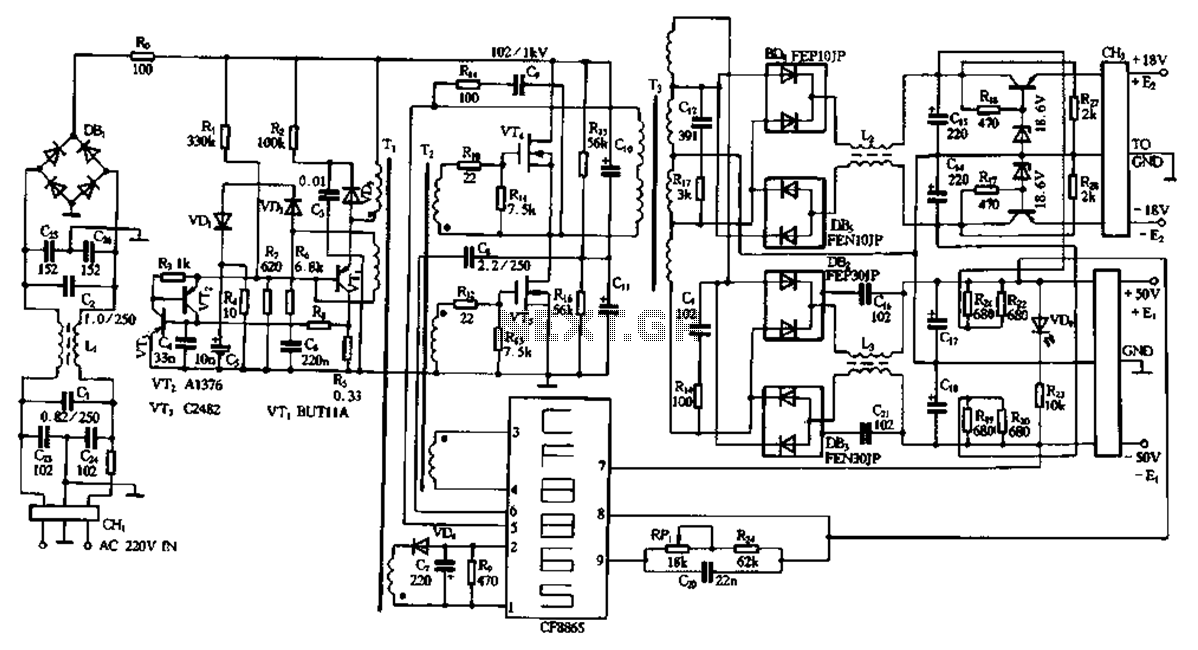
Simple delay lamp circuit 1
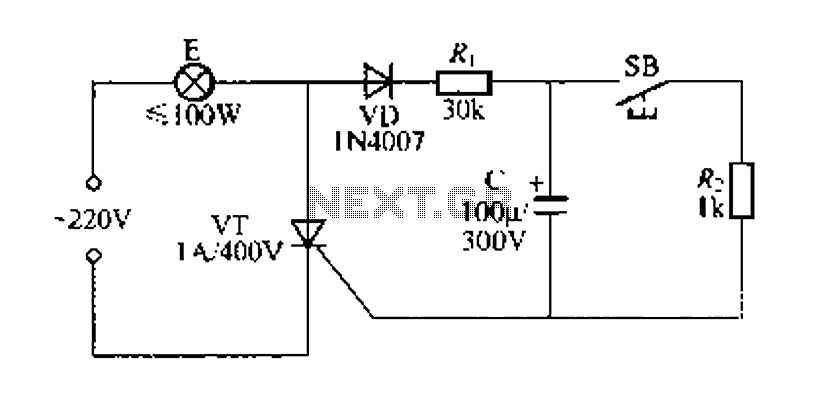
Figure 57 illustrates a simple delay lamp circuit that connects to lamp E using a two-wire connection. This design allows for the security bars to be installed directly, enabling replacement with a standard wall switch without altering the existing interior wiring. When the key switch contact SB is pressed, 220V AC is half-wave rectified by diode VD. The resulting voltage is then applied through resistor R to the gate of thyristor VT, triggering it to turn on lamp E. Simultaneously, the charge stored in capacitor C is released when SB is engaged. After releasing SB, the power supply charges capacitor C through diode VD and resistor R, maintaining the gate current of VT and keeping lamp E illuminated. Once capacitor C is fully charged, VT turns off, causing lamp E to extinguish. The capacitor must have a high-voltage rating of at least 300V and low leakage current. Excessive leakage current may prevent VT from turning off. To mitigate this, a resistor can be placed in parallel between the gate and cathode of VT, or a thyristor with a slightly larger trigger current can be selected, although this will reduce the delay time. When lamp E is illuminated, the current flowing through it is alternating, resulting in lower brightness but extending the lamp's lifespan.
The delay lamp circuit operates effectively by utilizing a thyristor as a switching element, which is controlled by the charging and discharging cycle of the capacitor. The circuit's design allows for easy integration into existing systems without requiring extensive rewiring. The half-wave rectification provided by diode VD ensures that the AC voltage is converted to a usable DC voltage for triggering the thyristor, allowing for reliable operation.
The choice of components is critical in ensuring the circuit performs as intended. The capacitor C must not only withstand high voltages but also exhibit minimal leakage to maintain the required charge for the thyristor's gate. The resistor R plays a dual role by limiting the current to the gate of the thyristor and aiding in the charging of capacitor C. Additionally, the use of a resistor in parallel with the thyristor's gate can effectively manage any leakage issues that might arise, ensuring that the thyristor turns off as expected when the circuit is deactivated.
The design also considers the operational characteristics of the lamp. By allowing the lamp to operate on alternating current, the circuit reduces the intensity of the light emitted, which can contribute to a longer lifespan for the lamp. This is particularly advantageous in applications where longevity and reliability are essential, such as in security lighting systems.
In summary, this delay lamp circuit is a practical solution for integrating lighting controls without significant modifications to existing electrical systems. Its design emphasizes safety, reliability, and efficiency, making it suitable for various applications where delayed lighting is desired.FIG. 57 is a simple delay lamp circuit, which is connected with the lamp E uses two-wire connection, so security bars when installed, can be directly replaced by an ordinary wa ll switch, without having to change the original interior wiring. When you press the key switch contact when SB, 220V AC by VD half crossing rectified, then by foot z R, thyristor VT applied directly to the gate, so that VT triggered the opening of the lamp E lights glow. Meanwhile, the charge stored in the capacitor C by SB product to bleed, after the release SB, power supply by VD, R.
To C charge, the charging current can be maintained VT continue to open, so the lights will not go out E. When C Kang full charge, VT off, lights E self-extinguishing. C should be resistant to high-voltage withstand voltage of 300V solutions capacitor, and the leakage current is small.
If the leakage current is relatively large, it may cause VT will not turn off. At this time, in VT gate between the cathode and a parallel resistor ikfl to solve, or choose trigger thyristor stream slightly larger, but the delay time will be shortened. Bong circuit when the lamp E lights flowing through the lamp current to alternating current BI Bo, the low light, but a longer lamp life.
The delay lamp circuit operates effectively by utilizing a thyristor as a switching element, which is controlled by the charging and discharging cycle of the capacitor. The circuit's design allows for easy integration into existing systems without requiring extensive rewiring. The half-wave rectification provided by diode VD ensures that the AC voltage is converted to a usable DC voltage for triggering the thyristor, allowing for reliable operation.
The choice of components is critical in ensuring the circuit performs as intended. The capacitor C must not only withstand high voltages but also exhibit minimal leakage to maintain the required charge for the thyristor's gate. The resistor R plays a dual role by limiting the current to the gate of the thyristor and aiding in the charging of capacitor C. Additionally, the use of a resistor in parallel with the thyristor's gate can effectively manage any leakage issues that might arise, ensuring that the thyristor turns off as expected when the circuit is deactivated.
The design also considers the operational characteristics of the lamp. By allowing the lamp to operate on alternating current, the circuit reduces the intensity of the light emitted, which can contribute to a longer lifespan for the lamp. This is particularly advantageous in applications where longevity and reliability are essential, such as in security lighting systems.
In summary, this delay lamp circuit is a practical solution for integrating lighting controls without significant modifications to existing electrical systems. Its design emphasizes safety, reliability, and efficiency, making it suitable for various applications where delayed lighting is desired.FIG. 57 is a simple delay lamp circuit, which is connected with the lamp E uses two-wire connection, so security bars when installed, can be directly replaced by an ordinary wa ll switch, without having to change the original interior wiring. When you press the key switch contact when SB, 220V AC by VD half crossing rectified, then by foot z R, thyristor VT applied directly to the gate, so that VT triggered the opening of the lamp E lights glow. Meanwhile, the charge stored in the capacitor C by SB product to bleed, after the release SB, power supply by VD, R.
To C charge, the charging current can be maintained VT continue to open, so the lights will not go out E. When C Kang full charge, VT off, lights E self-extinguishing. C should be resistant to high-voltage withstand voltage of 300V solutions capacitor, and the leakage current is small.
If the leakage current is relatively large, it may cause VT will not turn off. At this time, in VT gate between the cathode and a parallel resistor ikfl to solve, or choose trigger thyristor stream slightly larger, but the delay time will be shortened. Bong circuit when the lamp E lights flowing through the lamp current to alternating current BI Bo, the low light, but a longer lamp life.
Warning: include(partials/cookie-banner.php): Failed to open stream: Permission denied in /var/www/html/nextgr/view-circuit.php on line 713
Warning: include(): Failed opening 'partials/cookie-banner.php' for inclusion (include_path='.:/usr/share/php') in /var/www/html/nextgr/view-circuit.php on line 713
